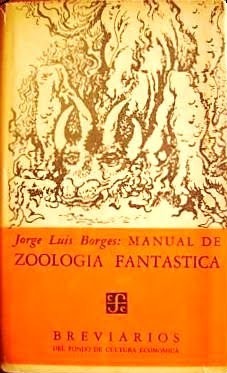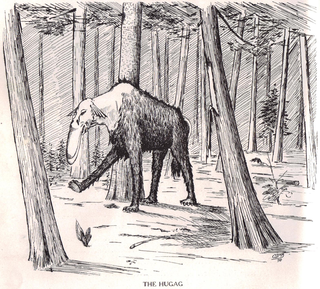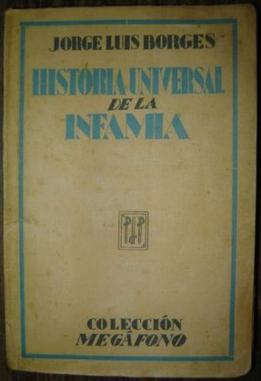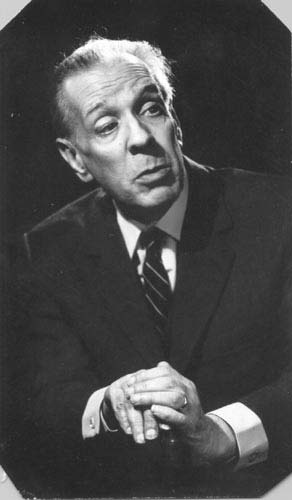
Jorge Francisco Isidoro Luis Borges Acevedo was an Argentine short-story writer, essayist, poet and translator regarded as a key figure in Spanish-language and international literature. His best-known works, Ficciones (transl. Fictions) and El Aleph, published in the 1940s, are collections of short stories exploring motifs such as dreams, labyrinths, chance, infinity, archives, mirrors, fictional writers and mythology. Borges's works have contributed to philosophical literature and the fantasy genre, and have had a major influence on the magic realist movement in 20th century Latin American literature.
"Pierre Menard, Author of the Quixote" is a short story by Argentine writer Jorge Luis Borges.

A kettle, sometimes called a tea kettle or teakettle, is a device specialized for boiling water, commonly with a lid, spout, and handle. There are two main types: the stovetop kettle, which uses heat from a hob, and the electric kettle, which is a small kitchen appliance with an internal heating element.

Ficciones is a collection of short stories by Argentine writer and poet Jorge Luis Borges, originally written and published in Spanish between 1941 and 1956. Thirteen stories from Ficciones were first published by New Directions in the English-language anthology Labyrinths (1962). In the same year, Grove Press published the entirety of the book in English using the same title as in the original language. "The Approach to Al-Mu'tasim" originally appeared published in A History of Eternity (1936). Ficciones became Borges's most famous book and made him known worldwide.

The Book of Imaginary Beings was written by Jorge Luis Borges with Margarita Guerrero and published in 1957 under the original Spanish title Manual de zoología fantástica. It contains descriptions of mythical beasts from folklore and literature. In 1967 the authors published an expanded edition retitled as El libro de los seres imaginarios. Borges collaborated on the first English translation, which was praised upon its publication in 1969.

Labyrinths is a collection of short stories and essays by Argentine writer and poet Jorge Luis Borges. It was translated into English, published soon after Borges won the International Publishers' Prize with Samuel Beckett.

Bunbuku Chagama, literally "Bunbuku tea-kettle" is a Japanese folktale or fairy tale about a tanuki, that uses its shapeshifting powers to reward its rescuer for his kindness.
"The House of Asterion" is a short story by Argentine writer Jorge Luis Borges. The story was first published in 1947 in the literary magazine Los Anales de Buenos Aires and republished in Borges's short story collection The Aleph in 1949. It is based on the Greek myth of Theseus and the Minotaur and is told from the perspective of Asterion, the Minotaur.
"The Form of the Sword" is a short story by Argentine author Jorge Luis Borges, first published in July 1942 in La Nación, and included in the 1944 collection Ficciones, part two (Artifices). The first English translation appeared in New World Writing No. 4, in 1953. In the story, an Irishman, now living near Tacuarembó in Uruguay, recounts his experiences in the Irish War of Independence and how he received the large scar on his face.
"El Golem" is a poem by Jorge Luis Borges, published in 1959, and later published as part of the 1964 book El otro, el mismo. The poem tells the story of Judah Loew and his creation of the Golem. In the poem, Borges quotes the works of German Jewish philosopher Gershom Scholem and Cratylus by Plato.

In North American folklore and American mythology, fearsome critters were tall tale animals jokingly said to inhabit the wilderness in or around logging camps, especially in the Great Lakes region. Today, the term may also be applied to similar fabulous beasts.
"The Disk" is a 1975 short story written by Argentine writer Jorge Luis Borges. It appears in the collection The Book of Sand.

A Universal History of Infamy, or A Universal History of Iniquity, is a collection of short stories by Argentine writer Jorge Luis Borges, first published in 1935, and revised by the author in 1954. Most were published individually in the newspaper Crítica between 1933 and 1934. Angel Flores, the first to use the term "magical realism", set the beginning of the movement with this book.
"The Two Kings and the Two Labyrinths" is a short story by Argentine writer Jorge Luis Borges, first published in February 1936. It was later included in El Aleph under the title "Los dos reyes y los dos laberintos". It deals with a number of Borgesian themes: labyrinths, supposed obscure folk tales, Arabia, and Islam. The story is itself referenced in-universe by characters of Borges' "Ibn Hakkan Al-Bokhari—Dead in His Labyrinth", also found in The Aleph.
"The Writing of the God" is a short story by Argentine writer Jorge Luis Borges. It was published in Sur in February 1949, and later reprinted in the collection The Aleph.
"The Congress" is a 1971 short story by Argentine writer Jorge Luis Borges. The story is on a utopic universal congress and is seen by some critics as a political essay.

"Emma Zunz" is a short story by Argentine writer Jorge Luis Borges. The tale recounts how its eponymous heroine avenges the death of her father. Originally published in September 1948 in the magazine Sur, it was reprinted in Borges' 1949 collection The Aleph. The story deals with the themes of justice and revenge, and of right and wrong. As in several other short stories, Borges illustrates the difficulty in understanding and describing reality. The story relies on issues of deceit, self-deception and inauthenticity to illustrate this. According to what Borges wrote in the epilogue of The Aleph, the plot of this story was communicated to him by his friend Cecilia Ingenieros. It was translated into English by Donald A. Yates and published in Labyrinths.

"The Analytical Language of John Wilkins" is a short essay by Argentine writer Jorge Luis Borges, first printed in La Nación on 8 February 1942 and subsequently published in Otras Inquisiciones (1937–1952). It is a critique of the English natural philosopher and writer John Wilkins's proposal for a universal language and of the representational capacity of language generally. In it, Borges imagines a bizarre and whimsical fictional Chinese taxonomy later quoted by Michel Foucault, David Byrne, and others.

"Mr. Miao", also translated as "The Tiger Guest" and "Student Miao", is a short story by Pu Songling first published in Strange Tales from a Chinese Studio (1740). It revolves around a few Chinese scholars and their encounter with a tiger spirit named Miao.

The Goofus bird is a mythical, backwards-flying bird, originating in lumberjack folklore in North America. It is also known variously as the Filla-ma-loo bird or the Flu-fly bird.











